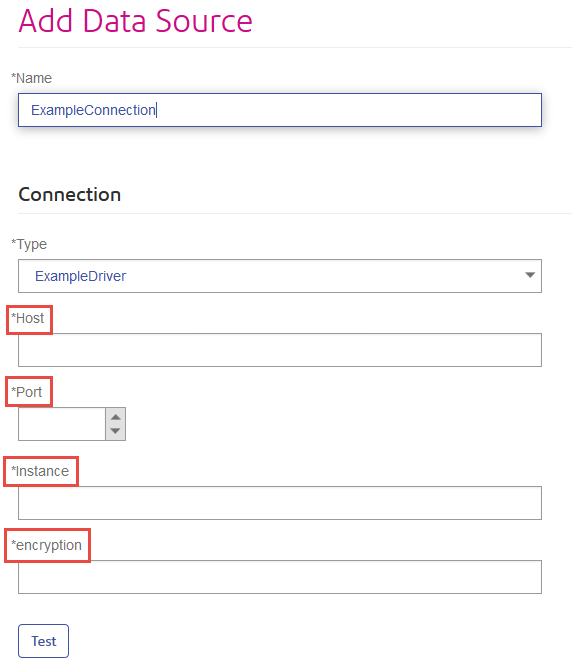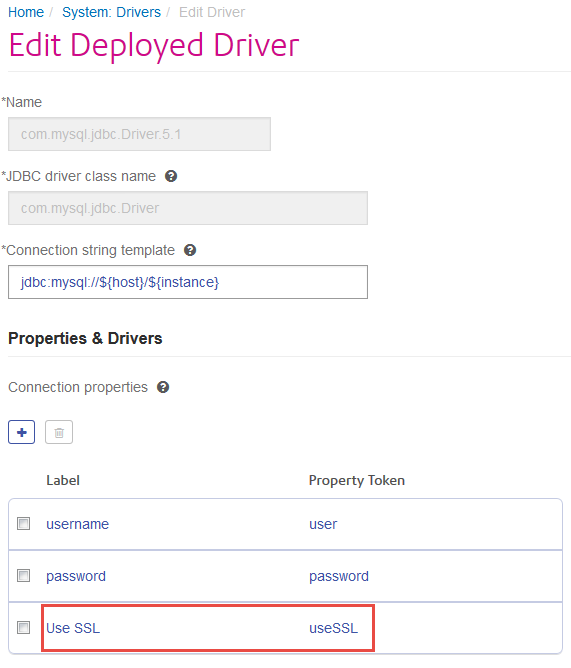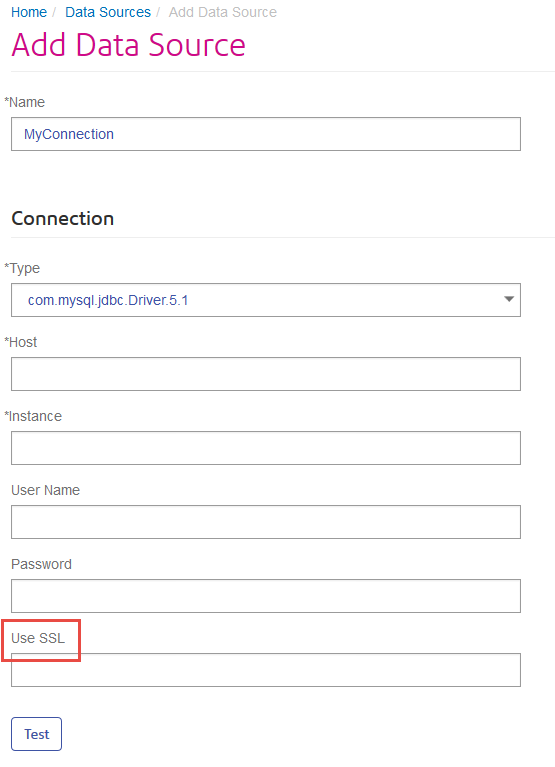Editing a JDBC Driver
You can edit any JDBC driver that you have added to Spectrum™ Technology Platform. You cannot edit or delete any of the drivers that come with Spectrum™ Technology Platform, including the drivers for SQL Server, Oracle, and any drivers included with modules.
- Open Management Console.
- Go to System > Drivers.
-
Select the driver you want to modify then click the Edit button
 .
.
-
In the JDBC driver class name field, enter the Java class name of
the driver. You can typically find the class name in your JDBC driver's documentation.
For example, to use the Microsoft JDBC driver, you might enter this:
com.microsoft.sqlserver.jdbc.SQLServerDriver
Note: You cannot edit the class name if you imported the driver files by copying them to the Spectrum Location\server\app\drivers folder. -
In the Connection string template field, enter the JDBC connection
URL to use to connect to the database, including any properties you want to set in the
connection string. Different database vendors use different connection strings so check your
database's documentation for more information about the connection string.
If the driver will be used by more than one database connection, consider using property tokens in the connection string instead of hard-coding property values that may be different for each connection. For example, if you want to have some connections use encryption and others not, you may want to define a property token for the encryption property.
To use a property token in the connection string, use this syntax:
${PropertyToken}Any property tokens you include in the connection string template will be required fields when defining a database connection.
For example, this connection string for SQL contains property tokens for host, port, instance, and encryption:
jdbc:sqlserver://${host}:${port};databaseName=${instance};encrypt=${encryption};TrustServerCertificate=true
These tokens are required fields when defining a database connection that uses this driver:

-
If there are properties that you want to make optional for database connections, define
them in the Connection Properties section.
-
In the Connection properties section, click the Add button
 .
.
- In the Label field, enter a user-friendly description of the property. The label you enter here is used as the field label in the connections window when creating a connection using this driver.
- In the Property token field, enter the token for the optional property. See the database driver's documentation for the properties supported by the driver.
For example, if you want to make encryption optional for database connections that use this driver, you could define the encryption property like this:

When a database connection uses this driver, the encryption property would be displayed as an optional property in the database connection:

-
In the Connection properties section, click the Add button
- Click Save.